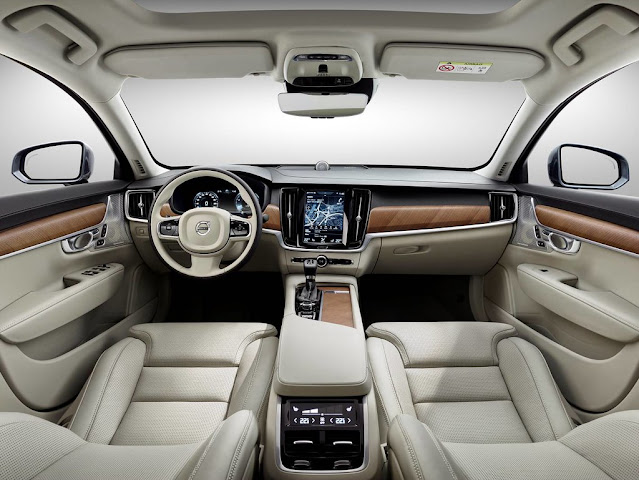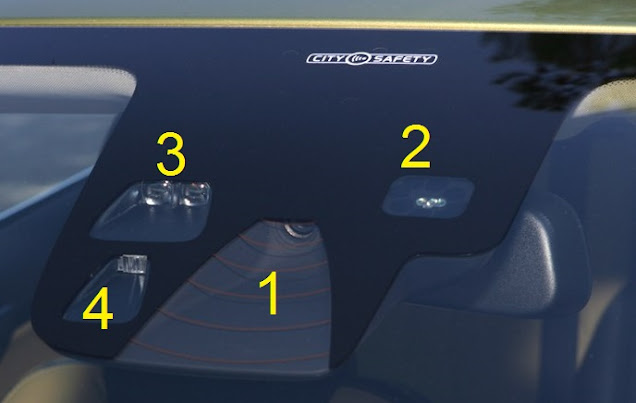Introduction In the world of internal combustion engines, turbochargers have become a popular method of increasing power and efficiency. This gas compressor, often referred to simply as a turbo, is a form of forced induction that forces air into the engine, resulting in more power for a given displacement. In this blog, we will explore the inner workings of turbochargers and their impact on engine performance. The Components of a Turbocharger At its most basic level, a turbocharger consists of three major components: the turbine, the compressor, and the bearing system that supports the turbine shaft connecting the turbine and compressor wheels. The turbine is located on the hot side of the turbocharger and is bolted onto the engine's exhaust manifold. As the engine runs, the exhaust gases pass through the turbine, spinning a fan called the turbine wheel. This spinning motion converts heat and pressure into rotational force, which in turn spins the compressor whee...
It’s time to change
Safest car in the world.......................
Research indicates that human behavior needs to be addressed to further reduce fatalities and injuries on the roads in the future. In particular, there are three key challenges of human behavior in cars:
SpeedingResearch indicates that human behavior needs to be addressed to further reduce fatalities and injuries on the roads in the future. In particular, there are three key challenges of human behavior in cars:
Intoxication
Distraction
These areas, which you can
read more about below, constitute some of the key challenges we face in
reaching the vision that is no one will be killed or seriously injured in a new Volvo car. Three challenges for road
safety are below:
Speeding
Poor speed adaptation in certain traffic situations results in decreased control while driving. Speeding remains one of the main causes of traffic fatalities.
Intoxication
Driver intoxication represents one of the most severe dangers to traffic safety. Lack of focus and slow reaction times caused by intoxication can immensely affect driving capabilities and as a result lead to severe injuries or death.
Distraction
Distraction might be one of the most underestimated risk factors when driving but is in fact a major concern for road safety. Similar to the risks of intoxication, distraction can lead to slower reaction times and loss of control while driving.
Supporting safer driving
As a pioneer in road safety, Volvo recognizes the need to help address these three key areas of human behavior. It is an ambition to find ways to support people in becoming the best drivers they can be.
Volvo aims to help address
these key challenges to road safety with a combination of advanced safety
innovations. Innovations that support drivers when they need it most –
intuitive technology that works together with drivers, not against them. The
aim is to detect dangerous driving behavior and support with corrective actions
when needed.
The Care Key is part of our initiative to help address speeding as one of the main challenges of road safety. It allows that Volvo drivers to line the limitations on the car’s top speed, which may be especially helpful before lending a car to the younger and inexperienced drivers. The Care Key will become standard in all volvo cars from 2021 and reflects our ambition to support better driver behavior.
Geofencing
In the future, geofencing technology could support correct speed adaptation in relevant situations. By detecting sensitive areas, such as school zones or hospitals, geofencing can provide signals that prompt your car to automatically adapt driving speed to the designated limit. We are currently looking into how to make use of this technology in the future.
In-Car Cameras
We are performing on in-car solutions to assist address two of the most traffic safety risk factors; distraction and intoxication. In-car cameras, together with other sensors, will allow the car to intervene when a clearly intoxicated or distracted driver is risking serious injury or death. This upcoming technology is intended to support drivers in extreme situations where they no longer may be able to control the car in a safe way.
Run off Road
Run-off road accidents are amongst the most important explanation for single vehicle accidents. To combat this, Volvo Cars has developed two systems aimed toward helping to avoid a run-off road accident from happening, or protecting the car’s occupants within the case of an unavoidable road departure.
Volvo introduces a replacement function Run-off Road Mitigation with in its 90 Series cars, designed to stop unintentional road departure at vehicle speeds between 65-140 km/h. This is a segment first. Run-off Road accidents are amongst the foremost common sort of single-vehicle accidents.
Reasons for such accidents include driver inattentiveness, fatigue or poor weather conditions. Half of all the traffic fatalities within the country are unintentional road departure crashes, while in other countries; single-vehicle accidents involve account for one-third of all fatal and severe injury crashes with passenger cars.
The system works by using
evasive steering maneuvers and braking
to support the driving force keep the
car on the road in situations where accidental road departure is detected as
imminent. When a possible escape road
situation arises torque is applied to the steering to support the driving force along side braking
action. The system can always be overridden by the active intervention of the
driver.
Pilot Assist Semi-autonomous drive
Pilot Assist may be a stepping-stone technology on the thanks to fully autonomous cars. The second generation of Pilot Assist system, launched in Volvo’s 90 Series cars, that extends the scope of this semi autonomous function to not only include low speed holdup situations but also include general driving situations on highways with proper road markings and signs.
Pilot Assist system that creates
driving safer and more relaxed in monotonous stop-and-go traffic by adding
steering assistance to the highly popular Adaptive controlling functionality.
When the Semi-autonomous
Pilot Assist system is once activated, then acceleration, braking and steering
are get assisted so as to
assist the driving force comfortably follow the traffic
flow within the present lane.
This has the effect of reducing the driver strain in monotonous driving
situations and increasing safety margins.
The system also delivers that
enhanced speed and distance keeping and a more consistent and precise position
in lane.
Semi-autonomous systems offer
more automation than earlier systems, and therefore the car can now drive itself to a
limited extent. With generation two of Pilot Assist the system now offers
semi-autonomous driving functionality up to 130 km/h and not needs a lead car. This
means that Pilot Assist are going
to be increasingly useful on long motorway trips where the
road markings are clearly visible.
However the driving force is predicted to
actively participate within the driving
and remains liable for monitoring,
supervision, and over all operation of the vehicle. It is also important to stress that
semi-autonomous systems are restricted in what proportion acceleration, braking and steering
force they will apply.
The driver is usually legally liable for driving the
vehicle (driver within the loop:
hands on the wheel, eyes on the road, mind on driving).
Avoiding or mitigating collisions with other vehicles
City Safety first warns the driving force then brakes automatically if the driving force doesn't brake or steer to avoid vehicles (cars, motorcycles, trucks, buses) that are ahead of the car, moving slower in the same direction, braking or not moving.
At speed differences up to 30 km/h between
the car and therefore the vehicle ahead, a collision are often avoided if the driving force doesn't react. At higher speed differences, the collision is mitigated.
The driver can take hold and brake and/or
steer away at any time.
If the collision is imminent,
at speeds above 30 km/h, the front safety belts are tightened to secure the
driver’s and front seat passenger’s position. US studies indicates that 50 per
cent of drivers involved in collisions have not tried to avoid the collision.
Avoiding or mitigating collisions with cyclists
If a cyclist swerves into, or crosses the trail of the car, or is stationary within the path of the car, the City Safety warns the driving force and brakes automatically if the driving force doesn't . The car’s speed are often reduced by up to 50 km/h and thereby avoid a collision.
If the driving force turns ahead of an oncoming vehicle City Safety can assist by braking automatically, if the driver does not. This functionality was a World-First within the all-new Volvo XC90.
Avoiding or mitigating collisions with pedestrians
If the pedestrian moves into, or crosses the path of the car, or is stationary in the path of the car, City Safety warns the driver and brakes automatically if the driver does not applied the brakes, at speeds up to 70 km/h. A collision with a pedestrian can be avoided at speeds up to 45 km/h. For the speeds between 45 km/h to 70 km/h, the collision is mitigated.
B) City Safety Technology: Large Animal Detection
Avoiding or mitigating collisions with large animals
In the Volvo S90 our comprehensive standard collision avoidance package, City Safety, also includes detection of large animals, like moose and horses. The standard-fitted radar/camera unit can detect the large animals standing on the road or slowly moving across the road with the side towards the car.
If an out-sized animal is detected, the Volvo S90 warns the
driving force . When the driving force brakes, additional brake pressure is provided to support
avoidance if needed. If the driving force doesn't react the car applies the brakes to mitigate the possible
effects of an impending collision.
In this way collisions with
large animals are often avoided or mitigated. The car’s speed
can be reduced by up to 15 km/h. If the collision is imminent, at speeds above
30 km/h, the front safety belts are tightened to secure the driver’s and front
seat passenger’s position.
Next car we will see next blog..............................................
Next car we will see next blog..............................................






Comments
Post a Comment
If you have any doubts and queries please let me know